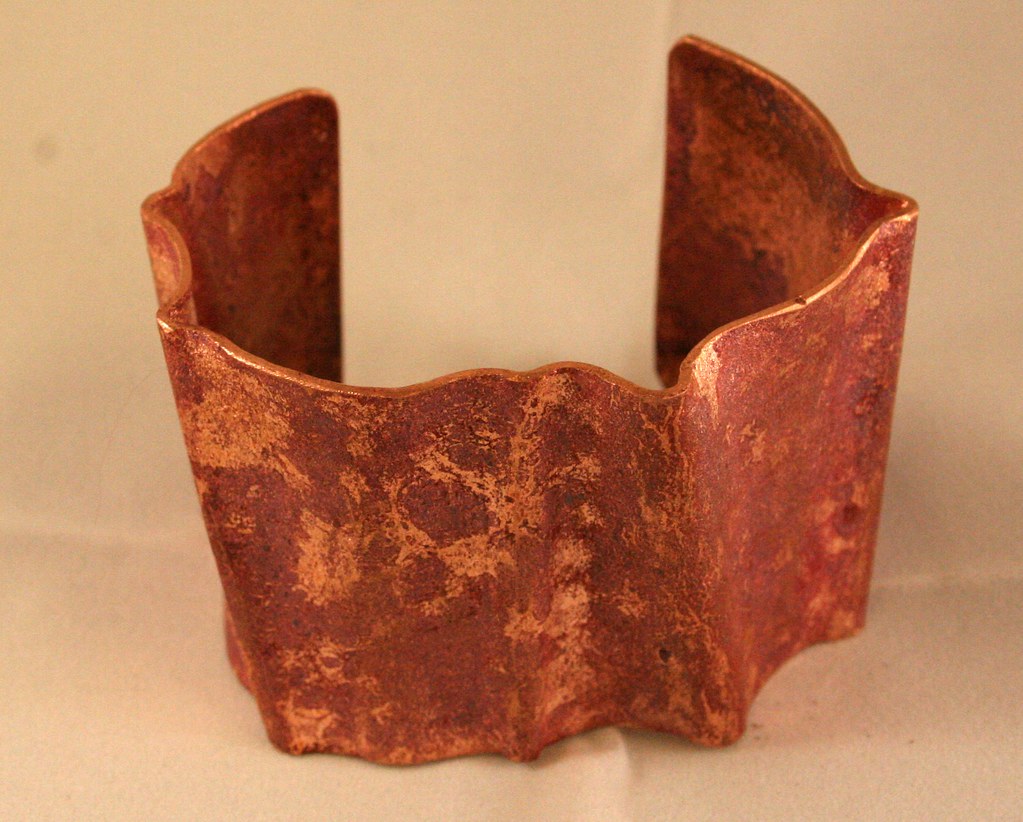The things that gnaw at me in the middle of the night.
Reticulation silver has a more brittle temper, post-reticulation, than does sterling and definitely more so than copper. I have intended all along to rivet the reticulation strips to the copper wires prior to forming the cuff into, well, a cuff. How else am I going to do it? The wires have to be formed as a group. Sure, I could attempt to shape each wire and shape them each the same but that's not realistic. There will be differences from one wire to the next. And there are seven wires. In some contexts, this would not matter. But as I will be laying six strips across these seven wires and then riveting them all together, and as those joints will have no play in them, the differences will quickly become glaring and, I fear, insurmountable. Thus my decision to rivet first and then shape.
Pillage then burn.
But--
Will the increased temper pose its own problems? Will one or more of these strips crack? Removing the rivets and replacing the strips will be difficult and I suspect I would damage one or more of the wires and possibly the nearby strips. How would I even get those rivets out? The only thing I can think of would be drilling them out and that would be nightware, even with the drill press. And what of the sterling wire rivets (I'm planning to use sterling wire at this time, would something else be better, I want my mommy) and the rivet holes? Will the rivets deform or crack even if the reticulation strips don't? Will the rivet holes get enlarged?
Why did I think this bracelet was a good idea?
I had toyed with the idea of backing the reticulation strips with sterling sheet (or copper) for stability and strength. I had set that idea aside. Now I revisit it. Should I back each reticulation strip (actually I would layer the piece, sterling strips, copper wires, reticulation strips) with a sterling strip and hope that it takes most of the stress? How can I decrease the stresses as I'm forming the cuff? Why did I want my mommy? She'd be no help at all.
Could I wrap each riveted joint with some sort of tape, perhaps the glassworker's best friend, electrical tape, to try to take up some of the stress? Wire would possibly cut into the various surfaces and mar them. I'm going to try that, I think, the electrical tape. It's flexible enough that I can get it into nooks and crannies but not likely to mar the surfaces.
At least I'll feel like I'm doing something.
The reticulation silver has been slow to deplete. I don't know why? Is it the bulk of the piece? But why would getting the piece up to a uniform temperature affect the formation of copper oxides. The rosebud tip is absolutely useless. Even the big, big torch is slower than I would expect. Holding the door of the kiln open from time to time to replenish the O2 is not helpful. Kiln depleting is still my fave rave idea, though, as I can work on other stuff while the oxides are forming.
Read More!
Speaking trip this April
1 year ago




